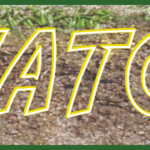
In the green renovation phase we are mainly concerned with the physical and quick reduction of the existing thatch layer, A process that will create vastly improved soil conditions and will encourage the increase of soil microbial activity.

To reduce thatch on all heavily used sports turf.
Part Organic Fertilisers with a unique blend of rhizo-bacteria and fungi ORGANIC AND PART ORGANIC 12.2.9 50% Organic Slow Release INORGANIC SLOW RELEASE 15.2.15 15% SCU Slow Release 7.0.10 with additional ThatchEating fungi 9.3.14 + 2% Mg + 2%Fe These fertilisers are designed to give immediate growth with a long lasting slow release element. Ideally …
How to Generate Natural (and free) Fertiliser for your Bowling Green using your own home brewed Compost Tea Compost Tea is a natural and inexpensive turf treatment, that you make yourself, turns thatch into free fertiliser and improves the health of your soil. Improve your Green and save your money Greenkeepers everywhere are brewing and applying …
Where grass grows on soil of any type the health of the turf/soil eco-system can be assessed by looking at the thatch layer. On grass areas where there is little or no human interference in the form of excessive compaction, fertiliser, pesticides and mechanical work (other than mowing) such as in meadows or parks the …
After LDP there is probably more information on this site about Thatch than anything else. Thatch production by grass plants is a natural process. Thatch is the layer at the very top of the green surface between the green grass blades and the brown soil beneath. Simply put; the bigger the distance between the green …
As bowling green maintenance specialists we get lots of questions every week about thatch. So here is a quick crash course on it; what it is, what it does and how to deal with it: What is it? Thatch is the name given to the mat of dead roots and shoots that accumulates on the …
Thatch is the mat of fibre between the grass and soil on your green. Although some thatch (5-6mm) is desirable too much can have a devastating affect on the playing surface. When thatch builds up beyond the optimum level it can quickly cause problems with surface drainage, which in turn can encourage fungal diseases like …
The sward on the majority of UK bowling greens consists of 3 main grass types; various bent grasses (Agrostis), various Fescues (Festuca) and Annual Meadow Grass (Poa annua). Of these, the bent grasses and annual meadow grass are prolific thatch producers. Thatch consists of dead and dying roots, shoots, leaves, stolons and rhizomes and in …